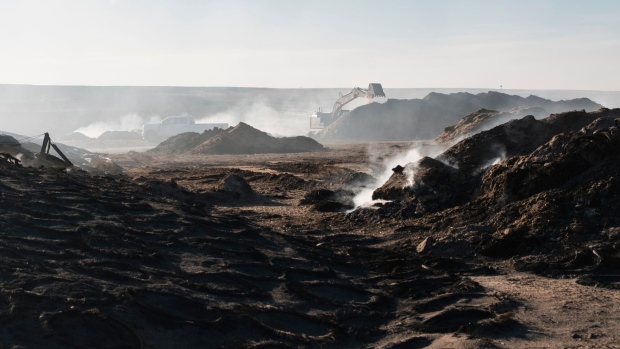Mar 13, 2024
Texas Fires Have Emitted a Near-Record Amount of Carbon
, Bloomberg News

(Bloomberg) -- Texas fires released roughly 3.4 million metric ton of carbon dioxide in January and February, according to a new analysis.
In January, Texas fires pumped out 440,400 tons of CO2 emissions, according to Copernicus Atmosphere Monitoring Service data shared with Bloomberg Green. February saw even more fire activity, including the Smokehouse Creek Fire, the state’s largest fire on record. It and other blazes across the state, emitted a staggering 2.9 million tons of CO2 emissions in February, or roughly 28% of US fire-driven carbon emissions.
Comparing Texas fire-linked carbon emissions over the past two decades — the extent of Copernicus’s satellite record — 2024 ranks behind only 2008, when 4.5 million tons of CO2 were released over the first two months of the year. These calculations don’t include emissions from the fires burning in the first half of March, as dry, windy weather has continued to make fully containing fires a challenge.
Researchers made the calculation using the Copernicus Atmosphere Monitoring Service’s Global Fire Assimilation System, which “provides up-to-date information on the location, intensity, and emissions of wildfires, vegetation fires, and open burning around the world,” said Luis Carlos Palomino Forero, who works with the agency’s communications office. The monitoring service makes use of satellite instruments that can gauge how hot a fire is burning, which can in turn help estimate emissions.
Beyond the staggering carbon footprint, the Texas fires have killed more than 7,000 livestock animals, as well as burned down ranches and homes. They have also impacted land set aside for carbon credits, though how much CO2 was released from that land specifically remains to be seen. The Smokehouse Creek Fire, which Xcel Energy Inc. equipment likely played a role in igniting, has burned more than 1 million acres in Texas and Oklahoma. As of March 13, the record fire was 89% contained, according to the Texas A&M Forest Service.
(Updates chart and figures in first, second and third paragraph to reflect fire-linked carbon dioxide emissions in Texas. An earlier update corrected a reference to carbon emissions as carbon dioxide.)
©2024 Bloomberg L.P.





